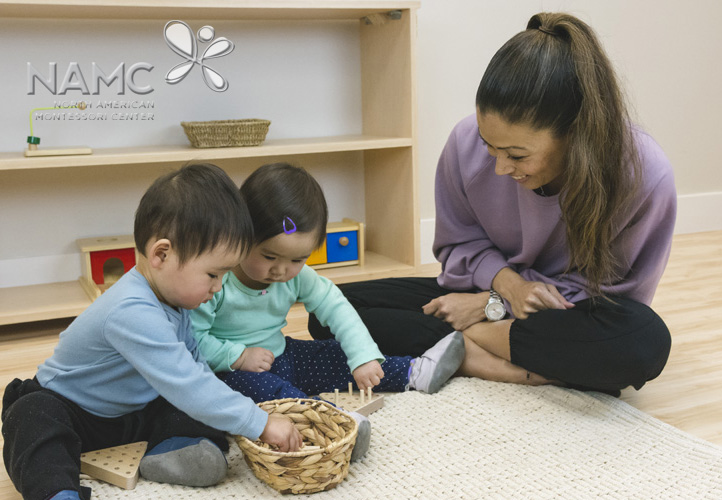
When I think back to my son’s early years, I find myself smiling at thoughts of him learning to catch a ball and the sheer joy on his face when he did so. Or tummy-time spent playing with rays of sunshine filtering through the windows. These moments are etched deeply in my mind as moments I spent watching him grow and develop.
Play time is a universal need of infants. For infants, learning always occurs through experience, and play is a natural instinct which combines learning with pleasure. Throughout most of childhood, play is the way children learn about themselves and their environment. For infants, in order for learning to have a significant impact, they must touch the object they are examining: they feel it, taste it, and examine it with their hands.
Have you ever tried playing with a tired, hungry, or fussy infant? It’s not much fun for you or the infant. (Or for you, frankly.) That said, infants will only play when they’re having fun. Therefore, learning must be fun and enjoyable for infants to develop.
The Purpose of Play in the Montessori Method
During the first few months of life, an infant’s senses are not fully developed and he cannot control his body. In fact, young infants have very little coordination between their senses and their bodies. How, then, can they play? Play for a young infant is so important because it helps in the development of the infant’s skills. Developmentally appropriate toys like mobiles and activity centers help develop an infant’s senses and coordination of muscles, both gross motor (arms and legs) to fine motor (eye movement and tracking).
After infants learn to control their own bodies, they become less ego-centric and more aware of the world around them. As an infant changes, so does play. The significance now is on the rules of the universe. She is learning to recognize shapes of objects and is learning to sort and classify by shape and size. She is learning how things work in her world – that there are clear and consistent rules that she freely and frequently tests by repetitive play with toys that reinforce these concepts. In turn, without being told directly, she is learning to analyze and problem solve. In addition, she is developing focus and concentration skills.
Infants, as well as older children and adults, experience joy when they are successful. Because play occurs in a safe and nurturing environment, infants learn coping skills and how to deal with emotional frustration when play becomes too intense or overwhelming, or when there has been a sense of failure.

It has been said by Montessorian’s worldwide that play is the work of the child. Play time plays an important role in the development of infants and young children. Through play infants are able to explore and learn about the world around them.
As much as possible, NAMC’s web blog reflects the Montessori curriculum as provided in its teacher training programs. We realize and respect that Montessori schools are unique and may vary their schedules and offerings in accordance with the needs of their individual communities. We hope that our readers will find our articles useful and inspiring as a contribution to the global Montessori community.
© North American Montessori Center - originally posted in its entirety at Montessori Teacher Training on Wednesday, November 28, 2007.
© North American Montessori Center - originally posted in its entirety at Montessori Teacher Training on Wednesday, November 28, 2007.

I really enjoy reading the blogs, however I think it would be really helpful if the authors could be more thoughtful regarding the selections of photos they use and if they promote the Montessori Approach. While I know, it is often not possible to always use natural elements in the child's development it is still a key focus in the prepared environment. Parent and educators look to blogs such as these to gain visual ideas as well. Selecting other photos to use besides ones where the child is primarily engaging with all plastic always sends conflicting and confusing messages. While, I may think that the child with the mobile probably has more in his environment than all plastic toys, the person who is new to all this "Montessori stuff" may assume that this is the norm or desirable. Just something to think about...
ReplyDeleteThank you for your valuable feedback. We appreciate you taking the time to offer your opinion about NAMC’s blog and it’s great to hear that you enjoy our articles. We do make every effort to include images that are helpful to our readers and that support Montessori philosophy and methodology. Over the past few years, we have been building our own image gallery for just this reason, but sometimes we are still constrained by the images that are available – and that was certainly the case in 2007 when this particular blog was published. Thank you again for your message and we hope that you continue to follow and enjoy our blog.
Delete